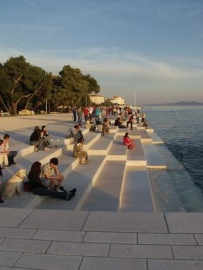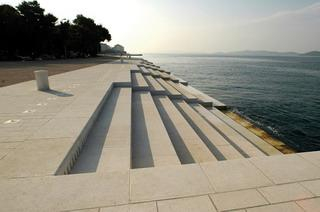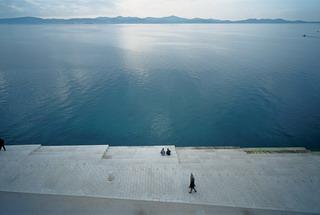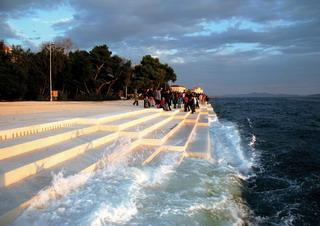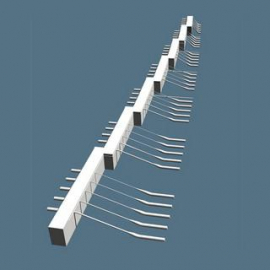Sea Organ
The city of Zadar lies on a peninsula and is dubbed the stone ship by its citizens. After the city was devastated in World War II, the chaotic reconstruction shaped that part of the seafront as a nondescript concrete wall. Having become became decayed and neglected, the citizens of Zadar rarely went to this spot, even though it is the best place to watch the famous Zadar sunset.
In 2005 the Port Authority, supported by the city government, completed the first phase of the reconstruction of the prow of the peninsula to enable the docking of passing cruisers. The shallower part of the seafront will remain a promenade and includes the sea organ the biggest musical instrument in the world. The rest of the project to recuperate the seafront will be carried out in the future and will feature a monument to the sun, another symbolic urban installation intended to give character to this important area.
The sea organ has the shape of a flight of steps leading to the sea; inducing people to change their walking pattern, to stop and go down to the sea. Under the stone steps, divided into seven 10-metre sections, there are polyethylene tubes of various sizes. The air, pushed by waves, flows from wider to narrower tubes, accelerating and producing sound in the pipes located in the resonating cavity below the promenade, with mystical openings in the stone letting out the sound. The instrument has seven clusters with five selected tones each, derived from the matrix of traditional Dalmatian a cappella singing.
As the energy of the sea is unpredictable with its endless cycles of high and low tide and the size, force and direction of waves - this eternal concert is always different in its infinite musical variations, composed and played by nature itself.

